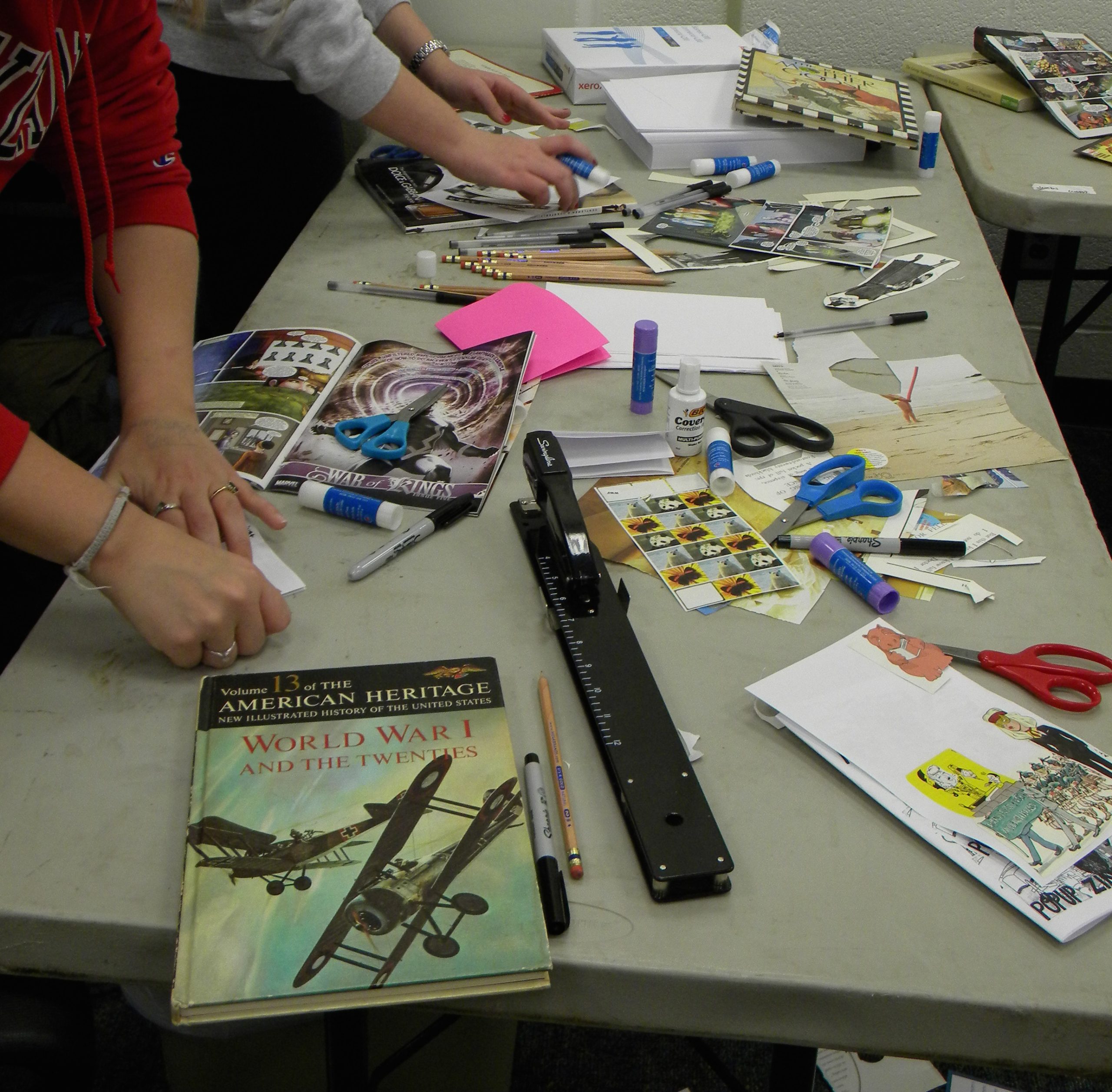Sheridan notes that “[c]omposers are embedded within the networks of tools, raw materials, spaces, media, and people; these networks profoundly shape rhetorical practices.” In the Makerspaces and Composition Practices blog carnival, we’ve seen scholars explore all the ways that material objects shape rhetorical composing, from makerspaces from a variety of angles, from [example]to [example]to [example]. We also had a great conversation on Twitter.

If you missed any of the posts in the series, here’s the full list of contributions in the series:
- “Compositional Craft: Zine Workshops as Pop-Up Makerspaces” by Melissa Rogers
- “Part 1: A Maker Mentality Toward Writing” & “Part 2: Doorknob Hanger: A Case Study in Making Rhetoric” by David Sheridan
- “A Maker Project: Writing about Material Culture” by Sonia Arellano
- “Utlilizing the Library Makerspace for Critical Invention in Intro to Science, Technology, and Society” by J.J. Sylvia IV
- “What Can We Learn about Writing and Rhetoric from a Makerspace?” by Ann Shivers-McNair
- “Before the Digital: What a History can Teach Educators about Makerspaces, Literacy and Rhetoric” by Krysten Manke
- “Remaking Optophones: an Exercise in Maintenance Studies” by Tiffany Chan, Victoria Murawski, and Jentery Sayers
- “Writing is Making: Maker Culture and Embodied Learning in the Composition Classroom” by Maggie Melo
- “Making Across the Curriculum: DIY Culture, Makerspaces, and New Modes of Composition” by Jessica Elam-Handloff
- “Precarious Deliberation and Failing Faster: The Value of Glitch in Mutlimodal Public Writing Assignments” by Stephanie Larson
How does making inform your writing practice? Talk back in the comments?
